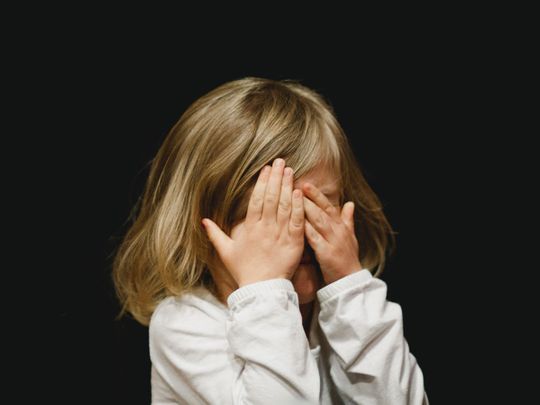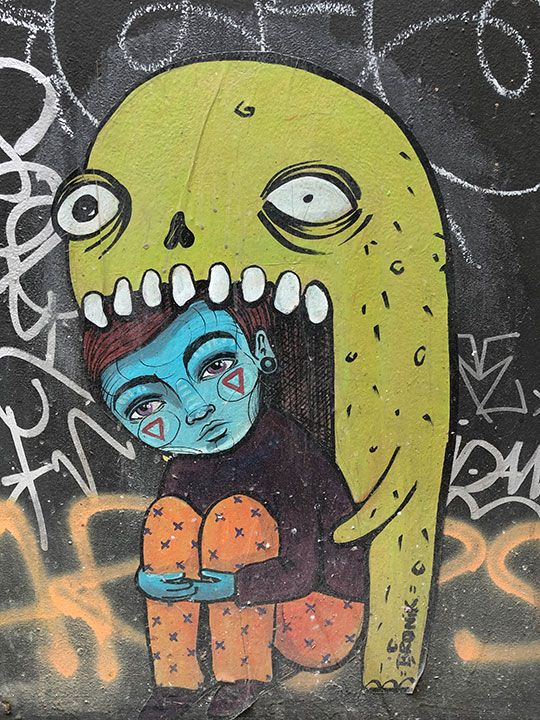
When the lights go out and the shadows shiver in the dead of night and you hear a scream…it’s your child crying that there are monsters in the room. It’s definitely tempting to dismiss the fright as mere fiction, but experts find belief in ‘monsters’ can be a great teaching tool. It’s also a good way to communicate with a child about what is causing them despair in the real world.
Where does the word monster come from?
The lineage of the monster can be traced back to the old Latin word monstrum, which means ‘an unnatural portent’.
These were sinister beasts, usually of fiction, used to represent the unnatural, to make people – and children – stay on the well-worn path.
Woven into stories, they play analogous roles indicating the unwanted and they turn into mnemonic devices that allow children to retain lessons contained within the tale. In these stories, monsters often represent the fears of a child or adult, and deconstructing their needs, wants and challenges can help a child learn empathy and gain understanding.
They can also play a greater role in disseminating tough ideas. A 2020 study in the UK-based academic journal Palgrave Communications explains, “Monstrous visions of the future and societal change presented through dystopian young adult fiction such as The Hunger Games (Collins, 2009) and picture books or animated shorts such as ‘Varmints’ (Craste and Ward, 2013) allow teachers to open sensitive discussion about challenging concepts and issues, including human rights, democracy and conflict.”

Fear is a basic, intense emotion aroused by the detection of imminent threat either real or imaginary, visual or auditory ,that puts the kid in the fear or flight state. We have to explain to them it is ok to feel fear. Teach them how to express it and how to deal with.”
Creating your own monster
One way in which you could help a child draw parallels between a real-life situation and a fictional one is through the creation of monsters. American fiction author Fran Wilde, for instance, asked a creative writing workshop in Virginia create their own monsters, complete with their strengths and weakness; in doing so, they learned not only about the monster’s motivations but also how to render it useless. Compare the situation with a real-world one, where a child may describe to an adult a bully in terms of a ‘monster’ – and then come up with creative ways by using rationalisation and lateral thinking to overcome it.
It’s all about generating rational thought. Elaine Maichin, Psychologist, Priory Wellbeing Centre, Dubai, explains: “Guiding and teaching your child how to confront their fears [or monsters], will help them build the confidence and independence they need to feel more in control and less afraid, both now and as they continue to grow into adulthood.
“Helping your child learn how to self-regulate (the ability to process and manage our own emotions and behaviours in a healthy way) will take time and practice to help them understand why they get scared and how to manage it. We want to give children the chance to practice getting through difficult situations without immediately trying to fix it. For example, if your child is afraid of dogs, start by asking questions such as “What makes dogs scary?” “Did a dog surprise you before?” “Is there a certain dog you are afraid of?”. Once you have a better understanding of the fear, validate their feelings through reassurance and then work on a plan to help them manage their fears through a step by step, day by day gradual exposure approach.”
Dr Laila Mohamadien, Specialist Psychiatrist, Medcare Hospital, adds: “Fear is a basic, intense emotion aroused by the detection of imminent threat either real or imaginary, visual or auditory ,that puts the kid in the fear or flight state. We have to explain to them it is ok to feel fear, as fear is a normal feeling for all of us. Teach them how to express it and how to deal with.”
- Let the kids speak. Let them express themselves; allow them to articulate their fears and thoughts. Let them describe these monsters and the way they see them and talk about why they are scary. Let them explain why they are afraid of them.
- Talk about the monsters over and over again. Think of it as a desensitising technique, where by speaking about the monsters with friends and family, you put chinks in its armour. Through repeated rationalisation and conversation, you demystify the creature.
- Talk about real and imagined. As a child, the difference between reality and fiction is blurred. Explain to the child that fictional characters have no real power.
- Origin stories must be told. Tell the children that the monsters they are so afraid of are human constructs and so still under human dominion; we create them and we can shut them off. They are just figments of human imagination.
- Explain to them about animation and how the videos are made. It’s difficult to be afraid of something when you can see the inner workings of it.

Don’t ignore the monster in the room
Back to the original dilemma; confronting a monster in the middle of the night. Stay calm, say experts. Elaine Maichin, Psychologist, Priory Wellbeing Centre, Dubai, says: “It is normal for children to feel afraid sometimes. Young children tend to have vivid imaginations and have difficulty telling what is real versus what is not real. Scary monsters that they imagine feel ‘real’ to them, and many are afraid of the dark and bedtime. Respect that the fear is real for your child and don’t make fun of them. Ask your child questions so you understand the situation and can be sure your child is safe. Don’t make your child confront their fears before they are ready and try to introduce them to these situations in a slow, mindful manner. For example, check under the bed with them for monsters to show that you acknowledge their fear and are helping to show them that the monsters are not there.”

Respect that the fear is real for your child and don’t make fun of them. Ask your child questions so you understand the situation and can be sure your child is safe. Don’t make your child confront their fears before they are ready.
“Remember to use encouragement and remind yourself to be patient as fear is a powerful feeling. Walking through your child on how to manage their fear and how they can face it at their own pace, can help them learn how to confront difficult situations in life. This will help them learn how to manage their own fears, emotions, and anxiety as they develop. By guiding them through this at an earlier age and practicing throughout these developmental years, children can learn the tools to manage difficult situations, emotions, and feelings in a healthier way as they become adults.”
Monsters provoke thought even as they extract emotions such as fear. By fighting them, understanding them and moving on – and expanding that band of logic to real life, you equip your child with a way to navigate life.
Do you have a topic you'd like us to cover? Write in to us at parenting@gulfnews.com








